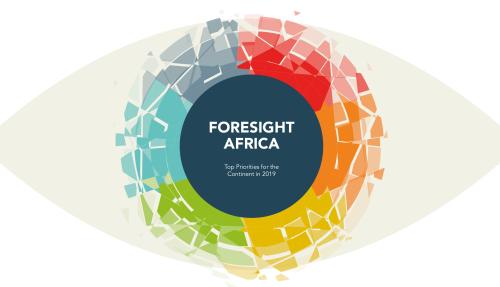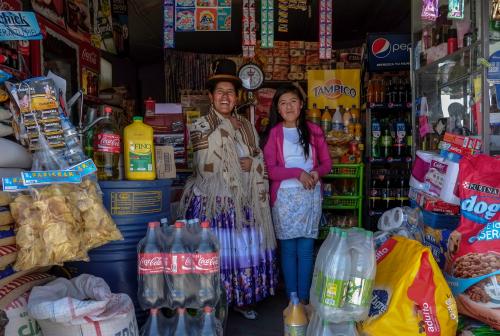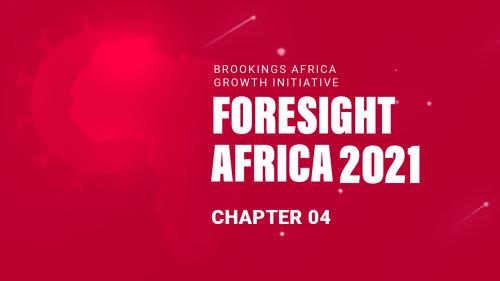Below is a viewpoint from Chapter 5 of the Foresight Africa 2019 report, which explores six overarching themes on the triumphs of the past years as well as strategies to tackle the remaining obstacles for Africa. Read the full chapter on Africa’s untapped business potential.
Small and medium-sized enterprises (SMEs) have the lowest rates of business survival worldwide, and it is generally difficult to grow employment in SMEs. Africa is no different. Viable businesses struggle with typical growth challenges around lack of access to capital and markets and the skills gap. Finding sustained solutions to these core private sector development challenges requires exploring territories beyond providing targeted support to SMEs, including building a more inclusive entrepreneurial ecosystem and embracing a more effective labor market and social protection policies.
Entrepreneurship needs to be nurtured, which should start with diagnosing the “scarcest resource” for enterprise development to maximize impact. Reliable funding is the lifeblood of any startup, yet in-depth knowledge of and experience in both domestic and international markets and managerial capability to run a firm of substantial size may well be far more important success factors than basic technical production knowledge. So how are the continent’s young populations and underrepresented groups supposed to acquire these much-needed entrepreneurial skills?
Africa is also home to one of the highest rates of necessity entrepreneurs in the world. Views on how to support necessity entrepreneurs are varied, ranging from giving the poor money to make use of their existing skills, to building firm capability, to overcoming sectoral and spatial mismatches to help necessity entrepreneurs transition out of existing enterprises or change the sector and location of current employment. The chosen tactic needs to be based on effective diagnosis of the scarcest resource and the market failures to be addressed. In many cases, microcredit and the provision of basic business trainings on technical skills can fail to generate meaningful impact on business performance of SMEs, notably for women-owned businesses.
While SMEs may have helped lift millions out of poverty through employment, provided first time employment to youth, and improved the wellbeing of SME owners, they have failed to create the large-scale and high-quality jobs that Africa needs. At the core of the challenge to SME development in Africa lies failed labor market policies and skill investment strategies to match the skill needs of growing industries. If growth of small firms into medium- or large-scale enterprises is a measure of success, most of these targeted micro-interventions would best be viewed as extensions of livelihood support programs. Within these programs, Africa needs the right mix of private sector development and labor market and social protection policies with clarity on which objectives are being promoted to improve targeting.
Beyond smart policies, inclusivity must be actively pursued by a range of stakeholders. This priority should be reflected in governments’ procurement policies, budgeting, and engagement with social entrepreneurs and innovators, as well as in the private sector’s participation in inclusive business models to advance both economic and social returns to investment.
Notably, for communities of stakeholders who chose to support a segment of underrepresented populations such as women and youth, a focus on the entrepreneur helps to identify binding constraints, leverage key strengths, and direct effective support. It is worth noting that women bring different sets of skills to labor markets; face different challenges within and outside their enterprises; and thrive in settings where a web of institutions and range of stakeholders promoting inclusion, forming an essential component of women’s “empowerment capital,” safeguard and promote their interests and address their specific challenges. The crucial ability here lies in identifying which skills and resources a woman needs to thrive in her given empowerment capital, and in expanding and enriching the latter.
Emerging evidence from psychology and experimental economics has advanced our understanding of effective pathways to best support women-owned SMEs. Notably, for successful interventions to be transformative, they need to move beyond basic access to financial and human capital and address central psychological, social, and skills constraints that women entrepreneurs face. Interventions which saw more transformative effects for female entrepreneurs have expanded capital and skill-centric programs with the provision of softer skills; agency, leadership, and mind-set considerations; market-focused programs, such as training to identify new market opportunities; and gender-lens investing to accommodate women participants’ schedules and provided free or affordable child care.
Finding lasting solutions to development challenges and creating a generation of entrepreneurs requires tapping into existing capabilities while filling gaps and scaling up successful pathways. Identifying cost-effective pathways should be an agenda of high priority to guide policies and inclusive and sustainable investments.







Commentary
Discovering a more inclusive private sector development where least expected
February 19, 2019